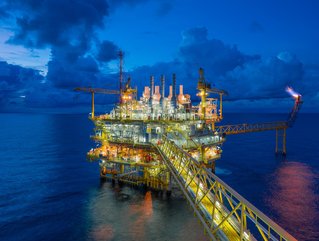Natural gas: A post-war outlook

The past 12 months has seen drastic changes in the European natural gas market after Russia’s invasion of Ukraine upended Europe’s long standing energy infrastructure. Before the war, Russia was Europe’s main supplier of gas, accounting for approximately 40% of total European supply. Today, Russian supplies to Europe have crashed to a mere trickle.
In response to Russia’s war, the EU in its RePowerEU scheme has set twin goals of securing alternative lines of supply of natural gas and finding ways to reduce consumption and hasten the green transition. But doing both at speed presents serious challenges.
Securing a new supply
The EU has turned to the global LNG market to secure new supply. In order to replace the approximately 150 billion cubic metres annually of Russian gas, European countries have invested heavily in LNG import infrastructure to facilitate new inflows of natural gas into the continent.
However, the major bottleneck in upscaling LNG trade isn’t European countries’ ability to import LNG, but rather it’s the ability of exporting countries to liquify and export natural gas. Historically the global LNG market has been geared principally to supplying Asian countries, with Europe largely separate given its historical use of Russian and North Sea gas pipelines.
The problem is that currently there’s not enough LNG exporting capacity to replace the lost Russian supply to Europe. The US has led the way in investing in LNG export infrastructure, but long construction timelines of typically two-three years preclude an immediate solution. Published construction schedules for LNG projects suggest that global LNG export capacity won’t expand sufficiently to replace lost Russian gas until 2025-2026.
The implication is that the resolution of Europe’s gas crisis in the near term will have to come via reductions in usage rather than new sources of supply. In the year since the start of the war, Europe has sharply reduced its gas consumption. In Germany, as gas prices rocketed to previously unseen levels, households and industrial users slashed consumption to below 80% of the 2018-2021 average level, highlighting the type of cuts that can be achieved when necessity demands it.
Shortages lead to consequences
But the scale of the reduction in gas consumption has not been without cost. European industry that depends on natural gas as an input, such as the chemicals sector, has seen swathes of activity effectively grind to a halt. In Germany, chemical sector production fell to levels not seen since the early 1990s, with some firms shutting down operations altogether or otherwise moving to locations where there is cheap and available natural gas, such as the US.
Shortages of gas supplies and consequent price rises have also had consequences for the power sector. The result has been unprecedented rises in electricity costs, exacerbating the cost-of-living burden for many.
A recent International Energy Week conference explored strategies to deliver substantial reductions in natural gas usage over the next decade. At Oxford Economics, we’re also deeply involved in these debates. We see long-run diversification away from natural gas as possible, but only with significant new investment in alternate technologies.
For households, the most important technological change is the replacement of gas boilers with heat pumps, something both the EU and US governments have committed to. Our own modelling suggests that household gas consumption in advanced economies will reduce by 30% by 2050, with much of this reduction being a consequence of substitution into heat pumps.
Within the power sector, natural gas has long been seen as a bridging fuel to fill the gap between our previous main power source, coal, and the renewable power of the future. But given the time horizons to fully roll out renewable power, we still see a space, albeit shrinking, for natural gas in the power mix in the coming years.
For example, we estimate renewables in the US will account for 72% of all power generation by 2050, compared to 20% today. Over that time, we forecast natural gas to shrink to 16% of power generation, compared to 38% today. Coal will completely drop out of the mix, compared to 22% today.
Reducing dependence on Russian gas
But the green transition will be a long, challenging process, and to bring about meaningful long-term reductions in natural gas consumption, Europe will need to commit to new and sustained investment in alternate technologies.
In that regard, the crisis of the past 12 months has accelerated efforts to reduce dependence on natural gas. The EU’s RePowerEU and the US’s Inflation Reduction Act both set out frameworks for sustained reductions in natural gas consumption. The main challenge now will be to maintain the commitment to these policy goals.






